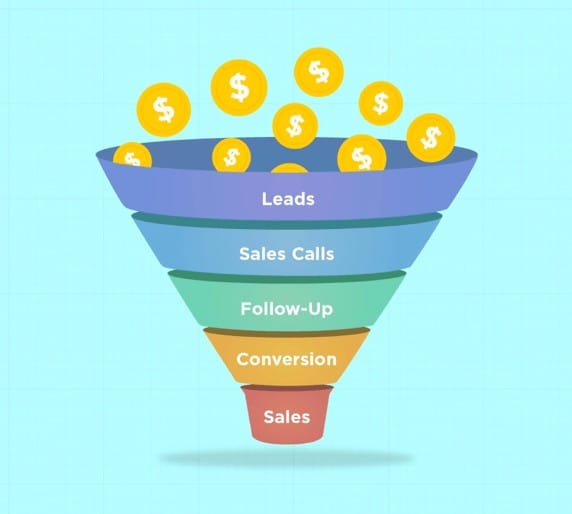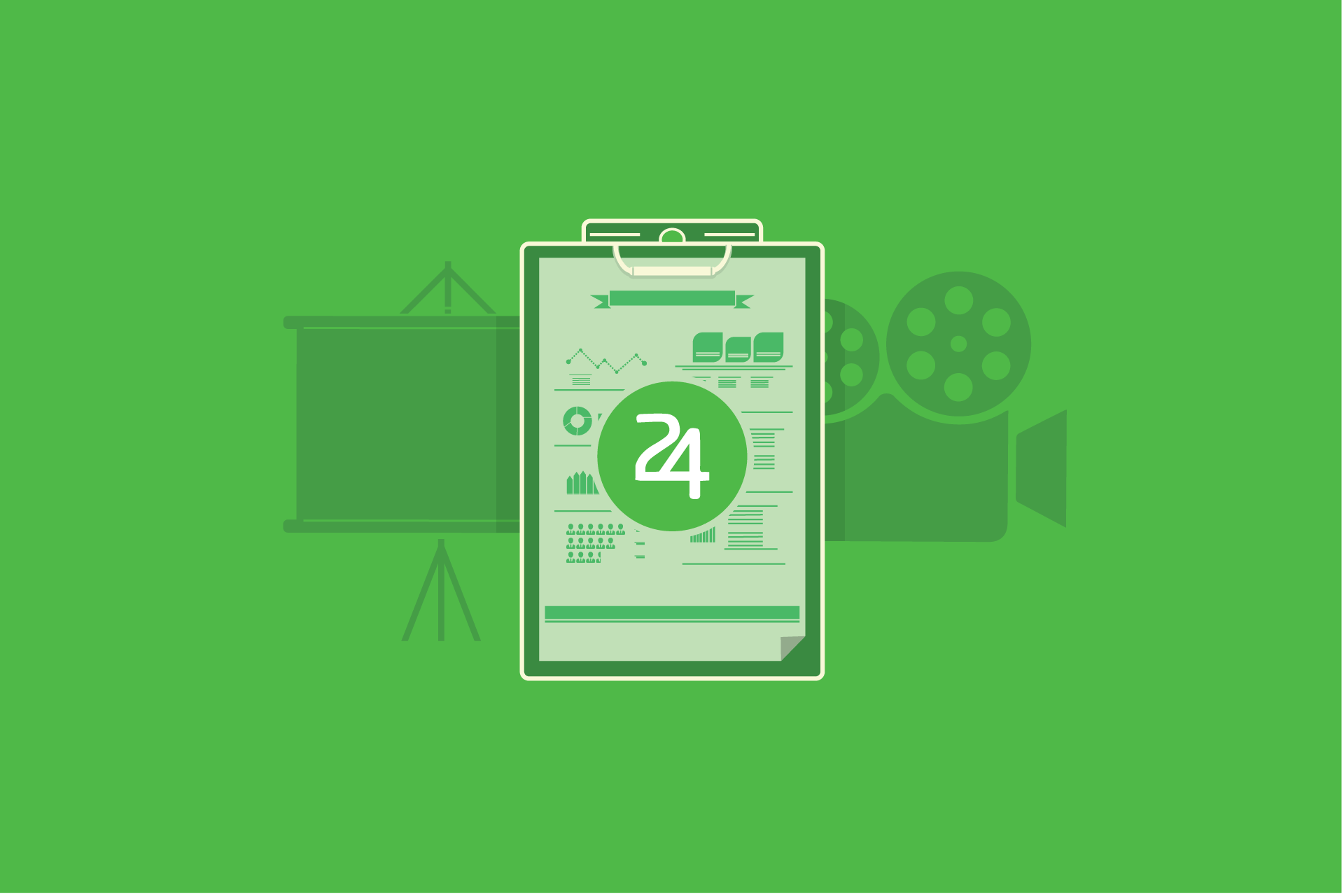8 Ways To Supercharge Your Presentation's Call To Action
A presentation without a call to action (CTA) is incomplete. It leaves you hanging and it makes you ask yourself, “Is that it?” You wonder what you’re supposed to do with the information you’ve just received. It’s quite rude when you think about it. If you don’t want to be perceived as such (a rude presenter), then read the entirety of this article. I’ll show you 8 different techniques you can follow to supercharge your presentation’s call to action.
What’s a Call to Action?
A call to action is basically just words you write on your slide. But it’s not just any phrase or sentence you string together. A good call to action will encourage your audience to take action right away. It won’t leave them in a so-called presentation limbo. Instead, they’ll know exactly what to do with the information you’ve shared with them.
Your CTA doesn’t have to be complicated. In fact, it can be as simple as asking your audience to like your social media profiles. Or, perhaps ask them to sign up to your mailing list.
Now, there are many different possible CTA’s you can use. Since you’re obviously spending time and energy on your presentation, you want to get the highest return on your investment. You don’t want to spend hours preparing for your presentation, only to have no one follow your call to action (that’s 0% ROI). You’re essentially wasting your time. Hence, it’s in your best interest to craft a suitable CTA that will get people to take action.
Top Tips for the Perfect Presentation Call to Action
Here are the do’s and don’ts you should follow to craft the best call to action for your presentation:
- DO define what your presentation is about

It’s important to know what your presentation’s goal is before you start writing your outline or designing your slides. You want to be as efficient as possible. So, you need to start from the top and determine your end game before you do anything.
For example, let’s say you have an upcoming presentation on digital marketing. What’s your objective? Do you want your audience to learn about the different kinds of digital marketing? Or do you want to establish yourself as an authority in the digital marketing space? Or how about promoting and selling your company’s services?
Once you figure out your objective, it makes it a whole lot easier to create your presentation outline, your slides, and of course, your call to action. It will help you stick to your ideas and not waste any time thinking about stuff that has nothing to do with your goal.
- DO take the time to know your audience
You’ll often read this advice on many presentation blogs. And it’s for good reason, too. Knowing who your audience is will help you prepare a presentation that will resonate with them. You’ll know exactly what to say to make them pay attention to you. Even better, you know what NOT to say so you don’t inadvertently alienate them.
You may think you’ve got the perfect CTA. But if you don’t know who your audience is, then it’s like playing dart in the dark. It will be extremely difficult for you to hit the bullseye. And you’ll find it hard to craft the right message to get people to listen to you.
Depending on the type of presentation you’re doing, implementing a marketing or sales funnel may be valuable to your business. Identify what stage in the funnel your audience belongs to. Then come up with the type of content and CTA that are going to resonate with them the most.
Here’s an image of what a typical sales funnel looks like:

If you’re doing a sales presentation, then you should know where they are in their journey. Do they know your brand at all? Or are you a total unknown to them? If it’s the former, then they’re classified as a ‘warm audience.’ If it’s the latter, then they belong to the ‘cold audience’ crowd.
Now, these are obviously different groups of people. For cold audiences, you want to gain their trust first before you do anything else. Warm audiences, on the other hand, already know who you are and will be more willing to listen to your sales pitch.
- DO answer the audience’s question, “What’s in it for me?”
Whether you like it or not, us humans are naturally selfish. Yes, we can be compassionate at times. But can you honestly say you’d go out of your way for random people if you don’t get something in return?
So, when thinking of the perfect call to action, make it clear that they’re going to get something in return.
If you want them to like your Facebook page, then tell them what’s in it for them. For instance, you can tell them that it will look good on their FB profile if they support such a noble (your) organization. If it’s a relatively big ask, like asking for the sale, then tell them how they can benefit. What do they stand to gain if they buy the product from you?
When thinking of your CTA, paint a picture of what their reward is going to be. Make it easy enough for them to say “yes” right away.
- DO make your call to action easy enough to follow
Even if you know your CTA is going to be life changing for your audience, you don’t want them to jump through so many hoops. Instead, you want to simplify the process as much as possible. Don’t make them overthink your CTA, or else they’ll think it’s going to be too much work for them.
We live in an age of instant gratification, and we want things here and now. We don’t want to wait for anything. This includes following CTA’s in presentations. If your CTA will take them several minutes or hours, then they’re most likely not going to follow through.

If you can simplify your CTA into one or two steps, then that’s great! If you’ve got a 5 or 10-step process, then you’ll need to break it down into fewer steps. Otherwise, you’re going to scare off even the most interested people in your audience!
Make it a no-brainer for people to take action. Make them go, “Oh, that’s so easy. I can definitely do this speaker’s CTA right now.” At the very least, get that initial commitment from people. Getting your foot in the door may open up more opportunities later on.
- DO make an offer they can’t refuse
You’ve probably heard of FOMO or the ‘fear of missing out.’ If you haven’t heard the term, I’m sure you’ve experienced it in one way or another.
Here’s an example:
You’re looking for a great deal on brand-new iPhones. You see an ad from a reputable store where they’re offering a huge 20% discount on all iPhones. But the catch is that the promo will only last until midnight tonight. At 12:01, the prices will revert back to normal. Since you really want the iPhone, you hit that ‘Buy Now’ button to get your discount.
See what happened there?
You were so afraid of missing out on the discount, you bought that thing on the spot! That’s why it’s called FOMO. And the sooner you can apply FOMO in your CTA, the higher the probability your conversions are going to be through the roof!
So, when thinking of the perfect CTA for your presentation, think about how you can position your offer as something they cannot refuse. If you’ve done research on your audience, you should be able to come up with something that will hit them right in the feels.
Make your audience feel the urgency. If it works for you, then perhaps you may also want to give them a time limit. Say, for instance, they only have 24 hours to take advantage of your offer. Else, it’s off the table and they’re not going to get the same kind of deal for the foreseeable future.
To conclude this point, you need to learn how to use the fear of missing out to your advantage. Don’t be afraid to think outside the box and come up with a solid CTA that are going to drive people to take action on the spot!
- DO put your CTA on a slide
Don’t just verbalize your CTA. Make it visual as well by writing it on a slide. Instead of the usual ‘thank you for watching’ slide, write something about your CTA. When people see it written down, it becomes more real to them.
Another technique you can try is that instead of using text, look for an image that will encapsulate the meaning of your CTA. For example, if your CTA is to get people to sign up for your mailing list, then put a nice image of a mailbox on your slide.
Or you can put up an image of what action takers are going to be rewarded with. If you’re promising freebies to everyone who signs up to your list or buys your new book, then perhaps you’d like to add a photo of all those promised freebies. This way, they’ll know you’re not bluffing, and you’ve got proof that those freebies actually exist!
Here are a few tips on how to design your CTA slide:
- Use large fonts. Font size should be at least 30 in size. Try to summarize your CTA in a single phrase or sentence.
- Your CTA slide should follow the color and design theme of your entire presentation.
- Don’t overcomplicate and overthink your slide design. Instead, follow the KISS principle – “Keep it simple, stupid.”
- Use plenty of white space. You don’t want a crowded-looking slide. Make it easy for people to follow your CTA by making sure there’s plenty of white space in your slide. Their eyes will automatically know where to look.
7. DON’T generalize your call to action
In addition to making your CTA simple enough to follow, you also want it to be as specific as possible. Don’t just give a general guideline of what you want your audience to do. Instead, give them a detailed breakdown.
For example, tell them what the first step should be. And the next step, and so on. Again, don’t overcomplicate your CTA, so try not to go beyond, say, 3 steps. Otherwise, your audience might get bogged down with information overload.
Let’s say you’re giving away a free 7-day trial to your new digital product. Step 1 would be to tell them where they can find your product. Give them a link to your website (make your website address easy to remember). For Step 2, tell them they’ll need to enter their email address and click on the download button, so they can finally access your product.
By breaking down your CTA into two simple steps, your audience can easily visualize what they need to do. They can determine right that very moment that it’s going to take them less than a minute to follow your call to action.
- Don’t end your presentation with a ‘thank you’ slide
Don’t get me wrong. A ‘thank you’ slide is not wrong per se. However, to truly make a lasting impression, go beyond the usual ‘thank you’ slide you see in most presentations.
Think about it this way: you’ve just spent several minutes building up your presentation from the introduction to the conclusion. You want to capitalize on that and end your presentation with impact. One of the best ways to do this is by having a strong CTA at the end of your presentation.
If your call to action involves getting people to contact you, then your CTA slide can be a list of your contact details. You can write your name, company name, address, website, and other relevant contact info. This will be useful as well if you’re giving out copies of your presentation.
Here’s a good presentation with a call to action slide asking people to stay in touch with the author:
The Magic To Think BIG from Andreas von der Heydt
Lastly, even though you don’t have a thank you slide, you shouldn’t forget to thank people for their time. Leave a good impression by being polite, but at the same time, get people to take action.
Final Thoughts
Your call to action plays a huge role in your presentation’s success. Follow the eight tips I’ve listed in this article to supercharge your presentation’s call to action!




